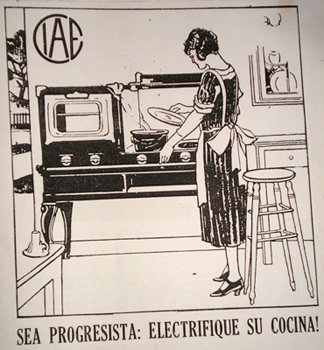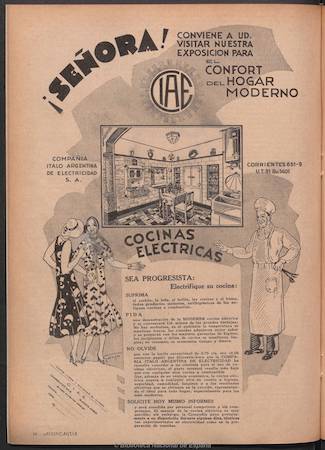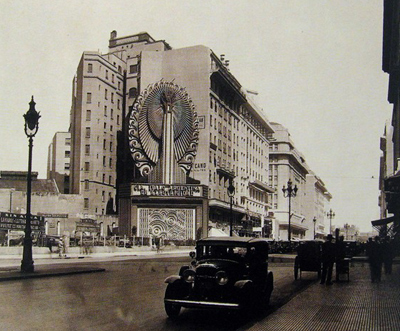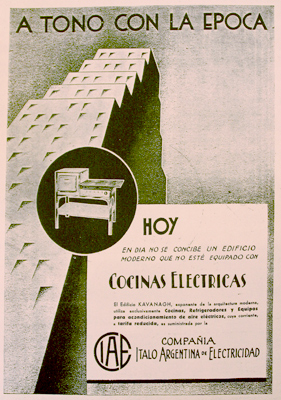
During the 1920s, the UCR policital party (Unión Cívica Radical) attempted to investigate the pricing structure for electrical companies which serviced Buenos Aires. While being accused of price gouging, the CIAE & the CHADE attempted to extend their 50-year concessions & renegotiate prices. Both discussions came to a halt in 1930 when General José Félix Uriburu ousted President-elect Hipólito Yrigoyen in the first coup d’etat in Argentine history. Since Yrigoyen represented the UCR, most of the party took the overthrow personally & withdrew from politics. An active UCR splinter faction had little power since Uriburu disbanded the legislative body of Buenos Aires for two years.
The military coup signaled the beginning of what came to be known as the década infame: a decade where corruption reached extraordinary levels, elections were rigged, & civil rights were suppressed… a final attempt by the upper class to remain in power. When General Agustín P. Justo assumed the presidency in 1932, the main opposition Socialist Party took over some of the former UCR agenda. Germinal Rodríguez, head of the Public Services Commission, accused both electrical companies of overcharging & used a recent Córdoba ruling to take them to court.

But in 1933 Rodríguez & the PSC suddenly reversed their decision & created a conciliatory commission. Deans of the schools of law, economics & engineering from the University of Buenos Aires participated in negotiations. What could motivate such a quick change of opinion? It was later discovered that Rodríguez opened an account at City Bank & large sums of money were being deposited by the CHADE’s holding company SOFINA. The bribes worked wonders… so instead of sanctions, the commission granted approval for a rate increase. The following year, the BA mayor vetoed the commission’s ruling & brought to light all parties involved. The CHADE was fined 87 million pesos (almost U$S 300 million or the 2010 equivalent of U$S 4.8 billion) but managed to avoid payment.

Electric companies continued to demand rate hikes, but in 1935 the Socialists took away their dual price structure. Industry could not be charged more than the maximum individual consumer rate. By 1936, the UCR resolved internal difficulties & beat the Socialists in elections. Top on their agenda was unfinished business from the 1920s. That same year, the CHADE switched hands yet again. Due to the outbreak of the Spanish Civil War, the company was made 100% Argentine in order to save capital. To denote the change, they adopted a new name: the Compañía Argentina de Electricidad (CADE). Although confusing, remember that the CATE, the CHADE & the CADE are all the same company & whatever agreements they made as the largest provider of electricity were also adopted by the CIAE.
During creation of the CADE, the director of SOFINA traveled to Buenos Aires. He wanted a 25-year extension of the original 1907 CATE concession… in other words, guaranteed service until 1982 with another 25 year optional extension to 2007. Nor did they want to hand over facilities to the city at the concession’s end as initially promised. In order to grease the wheels, SOFINA bribed leading members of the UCR including soon-to-be President Marcelo T. de Alvear who needed cash for his campaign. By the end of 1936, the electric companies got most of what they wanted… an extension of their original contract by 15 years & permission to raise rates.

In 1943, the political situation changed again with another military coup. As President, General Ramírez authorized creation of a commission to investigate the obvious corruption back in 1936. Its findings were published in 1944 as the Informe Rodríguez Conde, named for the chief investigator. As a result of the report, the CADE was supposed to reduce rates & the concession extension was to be revoked. But another political change came along: Perón. He ordered all public copies of the Rodríguez Conde report destroyed, & none of the measures recommended by Rodríguez Conde were adopted. Fortunately a number of copies of the report remained in private hands & was officially re-published in 1956.
During the Perón years, personal consumption increased as rates decreased dramatically, but funds were scarce for maintenance & upgrades. The CIAE managed to weather the storm, mainly because they focused on personal consumption rather than industry. But their reputation had been tarnished & were to become involved their own scandal…
CIAE series: Electricity timeline • Precedent & foundation • Swiss holding companies • Architecture 1 2 3 4 • Expansion • Scandal • Fade to black • Building list • Bibliography